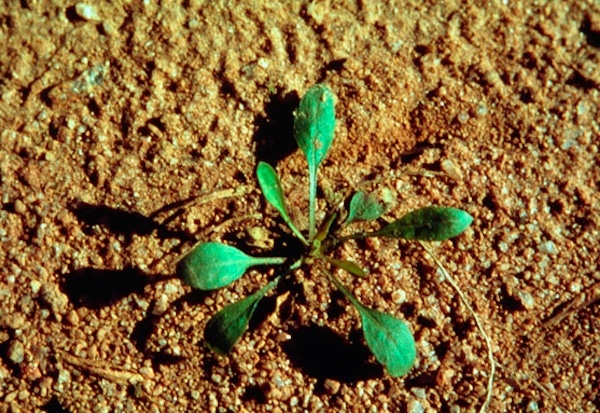June 6, 2013

Over the past several days, growers have increasingly been looking for options to control marestail after corn and soybean emergence, says University of Illinois Associate Professor of Weed Sciences Aaron Hager. “Many have reported poor marestail control from herbicides applied prior to planting (primarily no-till soybean), especially when these burndown applications contained only glyphosate or glyphosate and 2,4-D.
“The increasing frequency of glyphosate-resistant marestail populations, the rush to plant whenever field conditions were conducive and the less-than-ideal environmental conditions when many burndown applications were made, have contributed to a challenging situation for which a good solution might not be available,” he says, adding that while several herbicides can control emerged marestail plants that are less than 6 in. tall, few herbicides will control plants that are 12 in. or taller.
“The majority of Illinois corn acres receive one or more tillage operations prior to planting, and these tillage operations generally control emerged marestail. However, marestail might be a problem in corn acres planted with limited or no preplant tillage,” he says. “Growth regulator herbicides, such as dicamba and 2,4-D, can provide control or suppression of emerged marestail. Some acetolactate synthase (ALS)-inhibiting herbicides also have activity against marestail, and control is sometimes improved when – if allowed by label – these herbicides are tankmixed with dicamba or 2,4-D.”
Another option for control is glufosinate applied alone or with atrazine in glufosinate-resistant corn hybrids. “Keep in mind that if glufosinate was applied as a burndown treatment prior to corn planting, no in-crop applications of glufosinate can be made,” Hager says.
Foliar-applied hydroxyphenylpyruvate dioxygenase (HPPD) inhibitors combined with atrazine are other options that can provide control/suppression of emerged marestail less than about 6 in. tall, he adds.
“Marestail that survived a burndown herbicide in no-till soybeans can be very difficult to control after soybeans have emerged. Cloransulam or chlorimuron-containing products can be applied postemergence to suppress or control emerged marestail,” he says. “These products should be applied after the first soybean trifoliolate has expanded and before marestail height exceeds 6 in.
Like what you're reading? Subscribe to CSD Extra and get the latest news right to your inbox!
“These products can be tankmixed with glyphosate for postemergence applications in glyphosate-resistant soybean. Glyphosate is an option for control of glyphosate-sensitive biotypes and glufosinate is an effective option when used in glufosinate-resistant (Liberty Link) soybean varieties,” he explains. “Foliar-applied protoporphyrinogen oxidase (PPO)-inhibiting herbicides will not control emerged marestail.”
Hager says that another option to consider is to physically remove the surviving plants with a hoe, weed hook or by pulling them from the soil.
“Before summarily dismissing this as a viable option, remember that marestail plants can be very competitive with soybean and can produce around 200,000 seeds/plant that are easily dispersed long distances by wind,” he says. “A few plants that reach maturity this year can produce a sufficient amount of seed to infest an entire field within only a couple of seasons. Removing surviving marestail plants before they produce seed could save a great deal of time, money, and consternation in future seasons.”
You might also like:
Soil Residual Herbicide Options After Corn, Soybean Emergence
You May Also Like




